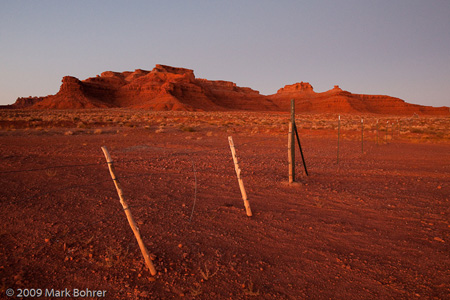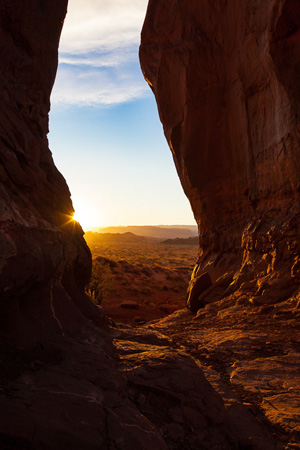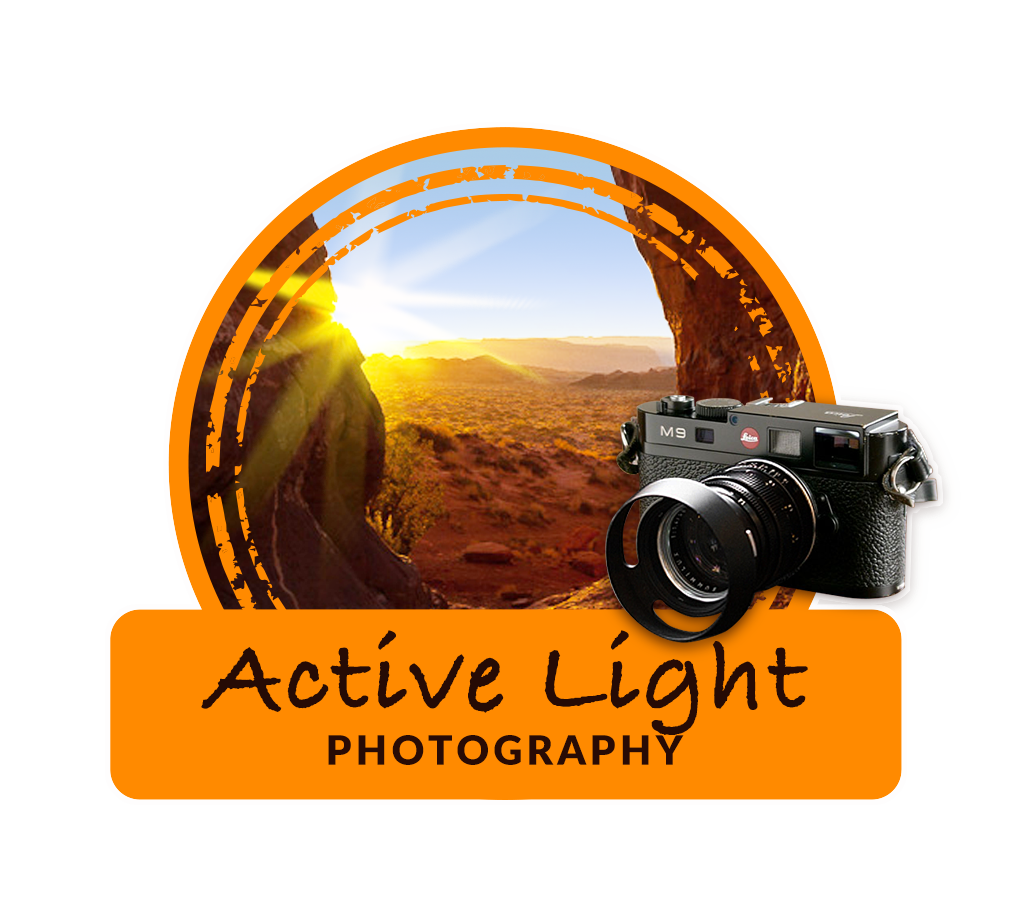Screaming oranges.
Bloody reds.
Spotlight yellows.
Head for Mexican Hat, Utah on U.S. 163 around sunset, and that’s what you’ll see. Throw in sandstone sculptures eroded from an ancient seabed as a bonus, and you’ll understand why painters, filmmakers and photographers have been coming here for over a hundred years. Anywhere less rural, man-made pollution would spoil the light, and you’d get blah, muddy colors.
My wife Pat and I stopped just after making the left turn from highway 191 to 163. I was looking for something to put in great light, a bit jaded after 10 days in the U.S. Four Corners. I saw a fence leading my eye across sand into a scene of rock, everything in surreal red more saturated than grilled salmon at the Strater Hotel. Put the camera on a tripod, focused the 16-35mm zoom on the nearest fencepost, set to f/9 for infinity DOF at 23mm, and took the shot.

And that was just the introduction.
In Monument Valley, you have a choice. Drive your jacked-up 4WD down to the Mittens or Totem Poles or Yeibichei Rocks with the other tourists. Or choose a Diné (Navajo) guide to show you otherwordly ruins and arches you haven’t seen, with expert interpretation.
Our young guides Miesha Holiday and Larson Homer offered Anasazi granaries, holes in the rock, pictographs, and beautiful Diné singing by Miesha. They delivered on every promise, giving us almost four hours in Mystery Valley. We saw great color, super light, and got a glimpse into Diné culture and family life that few people see.
Learn more about Miesha and Larson’s Navajo Spirit Tours at www.themonumentvalley.net.

Shot notes – You won’t need to tweak colors for saturation in post, but placing blue sky opposite red or yellow-lit sandstone makes all the colors really pop. A 1/2 neutral-density filter (‘grad’) will hold back bright areas of your shot. You can apply 1/2 ND corrections easily in Lightroom, if you have enough bright detail in your picture and subject exposure is close. See this image.
Archeological notes – Ruin walls appeared to be McElmo era, with some possible earlier Type III-IV. ‘Sherds of black-on-white and corrugated grayware were everywhere. The intricacy of lines on black-on-white ‘sherds argues for occupation after 1100 (Pueblo III).

Recent Comments